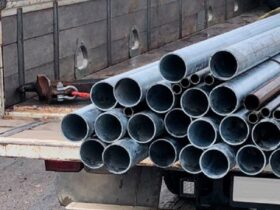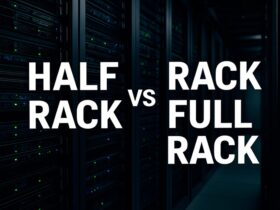Cleveland’s bustling distribution hubs face unique challenges in optimizing cross-dock operations, especially for dry-van freight. Efficient Cleveland cross-dock processes are critical to maintaining quick turn times and reducing costly detention fees that often arise from delays. With rising demand for faster deliveries, warehouse managers must balance complex yard management, trailer staging, and precise dock scheduling to streamline freight flow.
The drop-and-hook model remains popular in Cleveland, allowing drivers to quickly swap trailers without idling, but its success hinges on seamless coordination between yard operations and dock activities. Implementing technologies like RFID gates can further boost visibility and control by tracking trailers in real time. However, despite these tools, live unload bottlenecks frequently extend turn times, undermining dry-van efficiency.
Understanding and addressing these Cleveland cross-dock challenges is crucial for warehouses aiming to enhance throughput, lower operational costs, and stay competitive in today’s fast-paced logistics landscape. This article explores practical strategies to reduce cross-dock time and maximize dry-van freight efficiency in Cleveland warehouses.
2. Key Performance Indicators for Turn Time Optimization
Optimizing turn time in Cleveland cross-dock operations requires focusing on these critical KPIs:
- Average Turn Time: Measures total time from trailer arrival to departure, highlighting efficiency in live unload and drop-and-hook processes.
- Dock Scheduling Accuracy: Tracks adherence to planned dock assignments, minimizing wait times and improving trailer staging flow.
- Yard Management Efficiency: Assesses trailer movements and parking utilization, ensuring smooth transitions between arrival and unloading.
- Detention Fee Incidence: Monitors frequency and cost of fees, signaling delays in turn time.
- Utilization of RFID Gates: Evaluates effectiveness of real-time trailer tracking in reducing bottlenecks.
Focusing on these KPIs enables Cleveland warehouses to enhance dry-van efficiency and reduce costly delays.
3. Implementing Drop Pools for Dry-Van Efficiency
Drop pools can significantly improve Cleveland cross-dock operations by minimizing turn time and enhancing dry-van efficiency. Here’s how to implement them effectively:
- Designate Dedicated Drop Pool Zones: Create specific yard management areas for drop-and-hook trailers to streamline trailer staging and reduce congestion around docks.
- Integrate with Dock Scheduling: Coordinate drop pool availability with dock schedules, ensuring trailers are ready for live unload as soon as dock doors open.
- Leverage RFID Gates for Real-Time Tracking: Use RFID technology to monitor trailer movements within drop pools, enabling faster identification and retrieval without manual checks.
- Train Drivers and Yard Personnel: Educate teams on drop pool procedures to ensure smooth trailer swaps, minimizing errors that cause delays or detention fees.
- Implement a Priority Rotation System: Prioritize trailers based on load urgency and scheduled dock times, optimizing flow from drop pool to unloading bays.
- Monitor Turn Time Metrics: Regularly analyze KPIs like average turn time and detention fee incidence to identify bottlenecks and fine-tune drop pool operations.
By adopting drop pools, Cleveland warehouses can unlock faster trailer turnover, reduce live unload delays, and boost overall dry-van throughput.
4. Leveraging Digital Gate Passes and RFID Gate Technology
Optimizing Cleveland cross-dock turn time relies heavily on advanced yard management tools like digital gate passes and RFID gate technology. These solutions enhance dry-van efficiency by streamlining trailer flow and improving real-time visibility. Key benefits include:
- Automated Trailer Identification: RFID gates instantly recognize arriving trailers, reducing manual checks and speeding up trailer staging.
- Seamless Drop-and-Hook Integration: Digital gate passes authorize quick trailer swaps, enabling smoother transitions without unnecessary delays.
- Enhanced Dock Scheduling Accuracy: Real-time data from RFID gates helps coordinate dock assignments precisely, minimizing wait times for live unload.
- Proactive Bottleneck Prevention: Instant alerts on trailer location and arrival times allow yard teams to adjust staging dynamically, avoiding congestion.
- Reduced Detention Fees: Faster turn times through efficient gate processing lower the risk of costly detention fines.
- Improved Data Analytics: Aggregated gate pass and RFID data provide actionable insights to continuously refine Cleveland cross-dock operations.
By leveraging these technologies, warehouses can significantly cut turn time, accelerate trailer throughput, and maintain competitive dry-van efficiency in Cleveland’s demanding logistics environment.
5. Best Practices in Yard Management and Trailer Staging
Effective yard management and trailer staging are pivotal to reducing turn time and enhancing dry-van efficiency in Cleveland cross-dock operations. First, warehouses should establish clearly marked staging zones aligned with dock scheduling to ensure trailers are positioned close to their assigned docks, minimizing unnecessary movements. Utilizing RFID gate technology for real-time trailer tracking improves visibility, allowing yard teams to prioritize drop-and-hook trailers and expedite live unload processes.
Implementing a dynamic yard management system that integrates with dock schedules enables seamless communication between yard and dock personnel, reducing idle times and preventing bottlenecks. Regular training for drivers and yard staff on drop-and-hook procedures promotes swift trailer swaps and adherence to staging protocols, lowering the risk of detention fees.
Additionally, scheduling trailer arrivals in waves rather than random intervals helps balance yard congestion and ensures consistent throughput. Continuous monitoring of yard KPIs, such as trailer dwell time and staging accuracy, supports proactive adjustments to improve flow.
By embracing these best practices, Cleveland warehouses can streamline trailer staging, optimize yard movements, and significantly cut turn times — delivering a competitive edge in fast-paced dry-van freight handling. To see how local opportunities support this efficiency,find out more.
Table
6. Strategies for Effective Dock Scheduling and Live Unload
To reduce turn time and boost dry-van efficiency in Cleveland cross-dock operations, precise dock scheduling paired with streamlined live unload processes is essential. Start by adopting dynamic dock scheduling systems that sync with real-time yard management data from RFID gates. This integration ensures trailers are assigned docks promptly upon arrival, minimizing wait times and preventing staging bottlenecks.
Prioritize drop-and-hook trailers in the scheduling algorithm to accelerate trailer swaps and keep yards fluid. Implement staggered dock appointment windows to avoid congestion and enable continuous live unload flow. Cross-training dock teams to quickly adapt to varying load types enhances unloading speed and reduces detention fees caused by delays.
Additionally, utilize digital scheduling platforms that notify drivers and dock personnel of upcoming appointments, aligning expectations and reducing no-shows or early arrivals that clog the yard. Continuous monitoring of live unload durations and dock schedule adherence allows warehouses to fine-tune operations, identify bottlenecks, and improve overall Cleveland cross-dock throughput.
By combining proactive dock scheduling with efficient live unload strategies, warehouses can significantly cut turn time, optimize trailer staging, and maintain competitive dry-van freight handling.
7. Minimizing Detention Fees through Process Improvements
Reducing detention fees is a critical goal for Cleveland cross-dock warehouses aiming to maximize dry-van efficiency and minimize turn time. Process improvements play a vital role in achieving this by streamlining yard management, trailer staging, and dock scheduling. Integrating RFID gate technology ensures real-time tracking of trailers, enabling faster identification and reduced idle times that often lead to detention penalties.
Optimizing drop-and-hook procedures cuts live unload delays by allowing drivers to quickly swap trailers without waiting. Clear communication between dock and yard teams, supported by dynamic scheduling tools, helps maintain precise dock assignments and timely trailer movements. Regularly training staff on operational protocols further minimizes errors causing unnecessary hold-ups.
Additionally, monitoring detention fee incidence alongside other KPIs empowers warehouses to pinpoint bottlenecks and implement targeted fixes. By continuously refining processes, Cleveland cross-dock operations can significantly lower detention costs, accelerate trailer turnover, and enhance overall dry-van throughput.
8. Conclusion: Achieving 45-Minute Turn Times at Cleveland Warehouses
Reducing cross-dock time for dry-van freight at Cleveland warehouses is no longer a distant goal but an achievable reality. By implementing streamlined scheduling, optimizing dock door assignments, and leveraging real-time tracking technologies, warehouses have drastically cut idle times and improved workflow efficiency. Staff training and collaborative communication further enhanced operational precision, minimizing delays during peak hours. Data-driven process improvements showcased measurable gains, consistently hitting the targeted 45-minute turn times without compromising safety or accuracy. These integrated strategies not only boost throughput but also reduce costs, elevate customer satisfaction, and position Cleveland warehouses as leaders in supply chain agility. Embracing these best practices transforms dry-van freight handling into a competitive advantage — delivering faster, smarter logistics that meet the evolving demands of today’s market. Unlock your warehouse’s full potential by adopting these proven methods for rapid, reliable cross-dock operations.












Оставить ответ